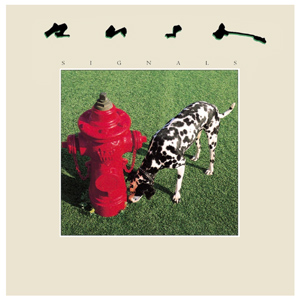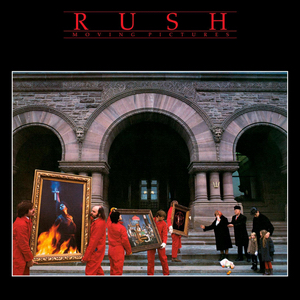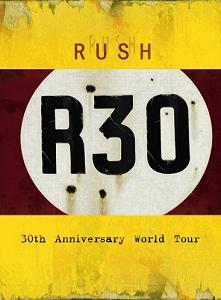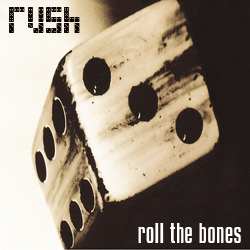
Rush was a Canadian rock band that primarily comprised Geddy Lee, Alex Lifeson (guitar) and Neil Peart. The band formed in Toronto in 1968 with Lifeson, drummer John Rutsey, and bass guitarist and vocalist Jeff Jones, whom Lee immediately replaced. After Lee joined, the band went through several line-up changes before arriving at its classic power trio line-up with the addition of Peart in July 1974, who replaced Rutsey four months after the release of their self-titled debut album; this line-up remained intact for the remainder of the band's career.

Signals is the ninth studio album by Canadian rock band Rush, released on September 9, 1982 by Anthem Records. After the release of their previous album, Moving Pictures, the band started to prepare material for a follow-up during soundchecks on their 1981 concert tour and during the mixing of their subsequent live album Exit...Stage Left. Signals demonstrates the group's continuing use of synthesizers, sequencers, and other electronic instrumentation. It is the last album produced by their longtime associate Terry Brown, who had worked with them since 1974.

Moving Pictures is the eighth studio album by Canadian rock band Rush, released on February 12, 1981, by Anthem Records. After touring to support their previous album, Permanent Waves (1980), the band started to write and record new material in August 1980 with longtime co-producer Terry Brown. They continued to write songs with a more radio-friendly sound, featuring tighter and shorter song structures compared to their earlier albums.

Test for Echo is the sixteenth studio album by the Canadian rock band Rush, released on 10 September 1996, by Anthem Records. It was the final Rush album to be co-produced by Peter Collins. The band supported the album with a world tour in 1996 and 1997, after which they went on a five-year hiatus following the deaths of drummer Neil Peart's daughter and wife, and would not record again until 2001.

R30: 30th Anniversary World Tour is a live DVD by the Canadian rock band Rush, released on November 22, 2005 in Canada and the US, and November 28, 2005 in Europe. The DVD documents the band's R30: 30th Anniversary Tour, and was recorded on September 24, 2004 at the Festhalle Frankfurt, Germany.

"The Pass" is the second single from Rush's 1989 album Presto. The lyrics by drummer Neil Peart address teenage suicide and the tendency to romanticize it. The song peaked at No. 15 on the U.S. Hot Mainstream Rock Tracks chart, and a music video was made for the song.
"2112" is a song by the Canadian rock band Rush. It was released as a 20-minute song on their 1976 album of the same name and is the longest single song by the band. The overture and the first section, "The Temples of Syrinx", were released as a single. The song was adapted into a comic booklet, which used the lyrics of the song as lines for the characters and the narrations from the cover as intros.
"Working Man" is a song by Canadian rock band Rush from their self-titled debut album. In an interview on the Rolling Stone YouTube channel, bassist and lead vocalist Geddy Lee said that "Working Man" is his favorite song to play live. "Working Man" became a favourite among Rush fans; the guitar solo appeared on Guitar World magazine's 100 Greatest Guitar Solos list.
"Circumstances" is a song by Canadian rock band Rush from its 1978 album Hemispheres. Lyrically, it is an autobiographical account by drummer Neil Peart about the time he spent living in England, and his eventual disillusionment with his then-current occupations.
"Heresy" is a song written by and performed by Rush and appears on their 1991 album Roll the Bones. The song is about the fall of communism in Eastern Europe and Russia, resultant about-face consumerism and the passing of the Cold War nuclear threat.

"Lakeside Park" is a single from Rush's third album Caress of Steel. The music was written by Geddy Lee and Alex Lifeson, and the lyrics were written by Neil Peart.
"Bastille Day" is a song by the Canadian rock band Rush, and is the opening track from their third album, Caress of Steel. Like most Rush songs, the music was written by Geddy Lee and Alex Lifeson, and the lyrics by Neil Peart. The song uses the storming of the Bastille, which began the French Revolution, as an allegory for revolutionary fervor needed in the struggle against tyrannical government.
"Freewill" is the second track on the 1980 album Permanent Waves by Canadian progressive rock band Rush. The song's music was composed by Geddy Lee and Alex Lifeson, and its lyrics written by Neil Peart. In a 2016 review of Rush discography for Ultimate Classic Rock, Eduardo Rivadavia described "Freewill" as a "cerebral but remarkably radio-friendly" song. Lee has stated that the final verse of "Freewill" is at the highest part of his vocal range.
The Test for Echo Tour was a concert tour by Canadian rock band Rush in support of their sixteenth studio album Test for Echo.

"Roll the Bones" is a song by the Canadian rock band Rush. It was released as the second single from their 1991 album of the same name.

"Show Don't Tell" is the first single on Canadian rock band Rush's 1989 album Presto. The song peaked at number one on the U.S. Hot Mainstream Rock Tracks Chart, the second of five songs by Rush to top the chart.

"Force Ten" is a song written, produced and performed by Canadian rock band Rush, released as a promotional single from their album Hold Your Fire. It was the last song written for the album. The song has been critically positively received, and peaked at number 3 on the Billboard Mainstream Rock Tracks chart.
"Witch Hunt" is a song by Canadian rock band Rush. It was released on their 1981 album Moving Pictures, and unlike many other Rush songs it was a true studio production, with a variety of percussion instruments and overdubs, and a separate keyboard player. It is the first of four songs in what has been called the band's "Fear" series, the other three being "The Weapon", "The Enemy Within", and "Freeze", although this song is the third part of the series in order, and went on reverse chronological order by the album.
"YYZ" is an instrumental rock composition by the Canadian rock band Rush from their 1981 album Moving Pictures. It is one of the band's most popular pieces and was a staple of the band's live performances. The live album Exit... Stage Left (1981) and the concert video recording A Show of Hands (1989) both include versions in which Neil Peart incorporates a drum solo – as an interlude on the former, and as a segue out of the piece on the latter.
The Exit... Stage Left Tour was a concert tour by Canadian rock band Rush, in support of the band's second live album Exit... Stage Left and its accompanying video.










